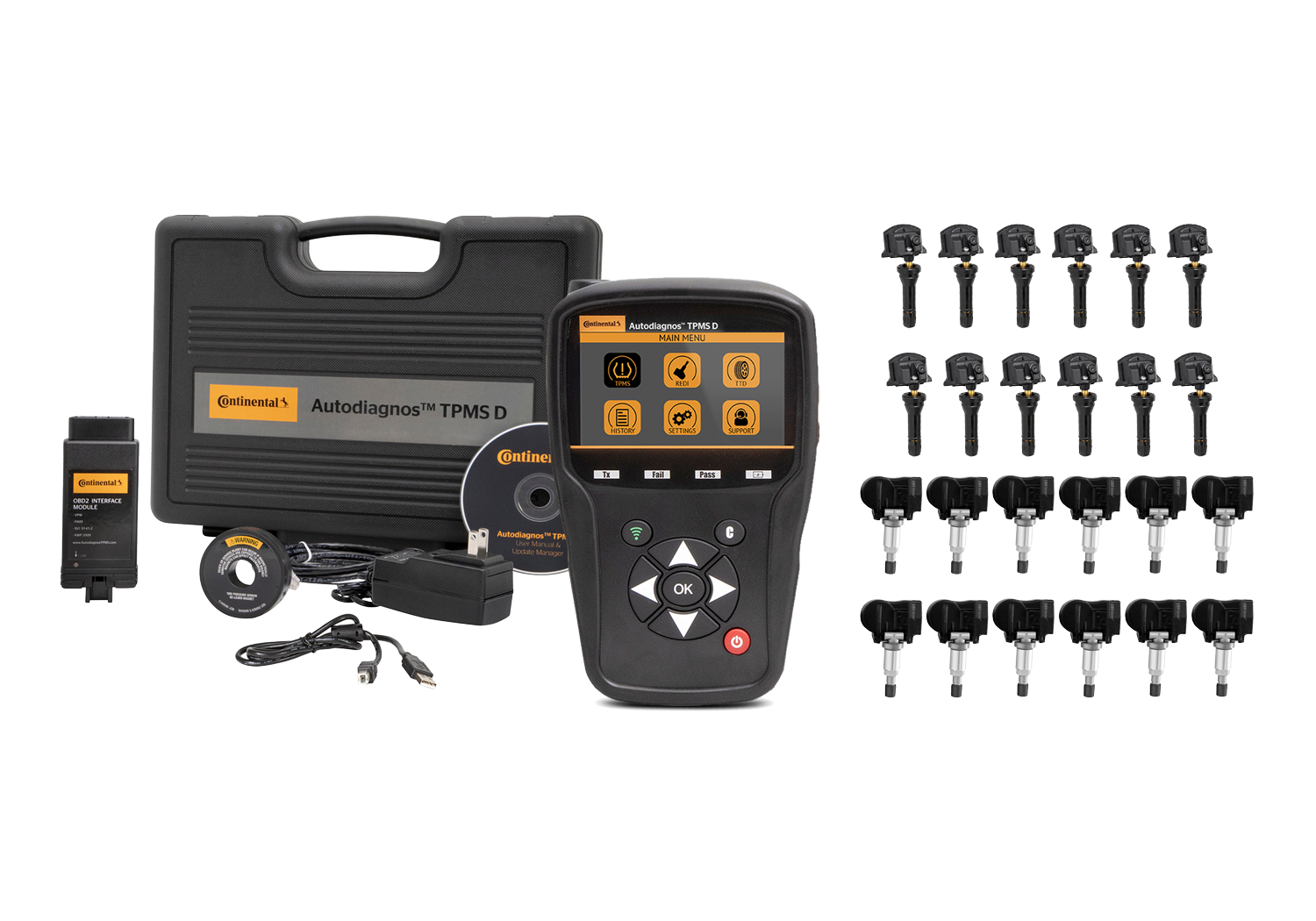We’re happy to provide these TPMS FAQs for drivers.
Continental designs and manufactures Tire Pressure Monitoring Systems for carmakers and provides replacement sensors and TPMS service parts to auto service pros. If you don’t find what you’re looking for in our TPMS FAQs for drivers, feel free to contact us.
- What is TPMS?
What is TPMS?
TPMS or Tire Pressure Monitoring System is an electronic safety system that monitors the tire pressure of vehicles’ tires. The TPMS system will warn the driver if the tire pressure falls 25% below recommended tire pressure.
- What if my car doesn’t have a TPMS system?
What if my car doesn’t have a TPMS system?
Most cars sold in the USA before 2008 don’t have TPMS. If your car doesn’t have TPMS, then you should manually check your tires monthly, whenever there’s a drastic change in temperature, or anytime the tire looks ‘low.’ There are aftermarket TPMS systems available, but they are expensive and require some skill to install.
- What does it mean if my TPMS light is on?
What does it mean if my TPMS light is on?
If your TPMS light is on in a steady state, one or more of your tires is more than 25% below the recommended tire pressure. You should stop driving immediately, determine which tire is low, and change it. Driving a tire that is 25% below the recommended pressure can result in tire failure, loss of vehicle control, or even a vehicle roll over.
If your TPMS light is flashing, there is a problem with one of the sensors or with the TPM System. You’ll need professional service, but check your tire pressure manually to make sure your inflation is still good.
- What affects tire pressure?
What affects tire pressure?
Dramatic changes in weather will affect tire pressure. Sudden cold can cause low pressure readings as the air inside the tire contracts. Hot weather temperatures can cause tire pressure to rise as the air inside the tire expands.
Driving your vehicle creates friction that causes the tires to heat up. This will increase the pressure inside the tire.
It is common for tires to lose pressure slowly, over time due to seepage through the tire valve, past the tire beads, or even through the tire wall. Older tires will tend to lose pressure more quickly than new tires, but sudden, unexpected low pressure indicates there is a leak.
- Where can I find tire pressure inflation information for my vehicle?
Where can I find tire pressure inflation information for my vehicle?
The manufacturer’s recommended pressure can be found on a label that’s on the drivers door jamb or driver’s interior door edge. The label is called the “placard,” and the correct pressure is called the “placard pressure.” The recommended pressure is based on reading the pressure when the tire is ‘cold’ - that is when it has not been driven recently. If you measure the tire after it’s been recently driven, you’ll get a higher pressure than if it’s measured ‘cold.’
- How long should a TPMS sensor last?
How long should a TPMS sensor last?
TPMS sensors run on batteries that can last anywhere from 5-10 years. Sensor battery life will depend on how much driving you do over time and the conditions that you drive in.
- Do I need to replace my TPMS sensors when I get new tires?
Do I need to replace my TPMS sensors when I get new tires?
When you get new tires, if the TPMS sensors are still working, they can be reused. You should however plan on replacing the TPMS sensor service parts.These can include the valve stem, valve core, and stem nut and grommet (on metal stem sensors). These parts degrade over time and can cause the TPMS sensor to fail if not maintained.
- Do run flat tires need TPMS?
Do run flat tires need TPMS?
Run flat tires are engineered to let you continue driving even after losing some or all of the air pressure inside the tire. There are limits on how fast and how far you should drive on run flat tires after they have lost air. A run flat tire may not appear to have lost any air at all, even if there’s no pressure in the tire. Because of this, run flat tires definitely need TPMS sensors.
